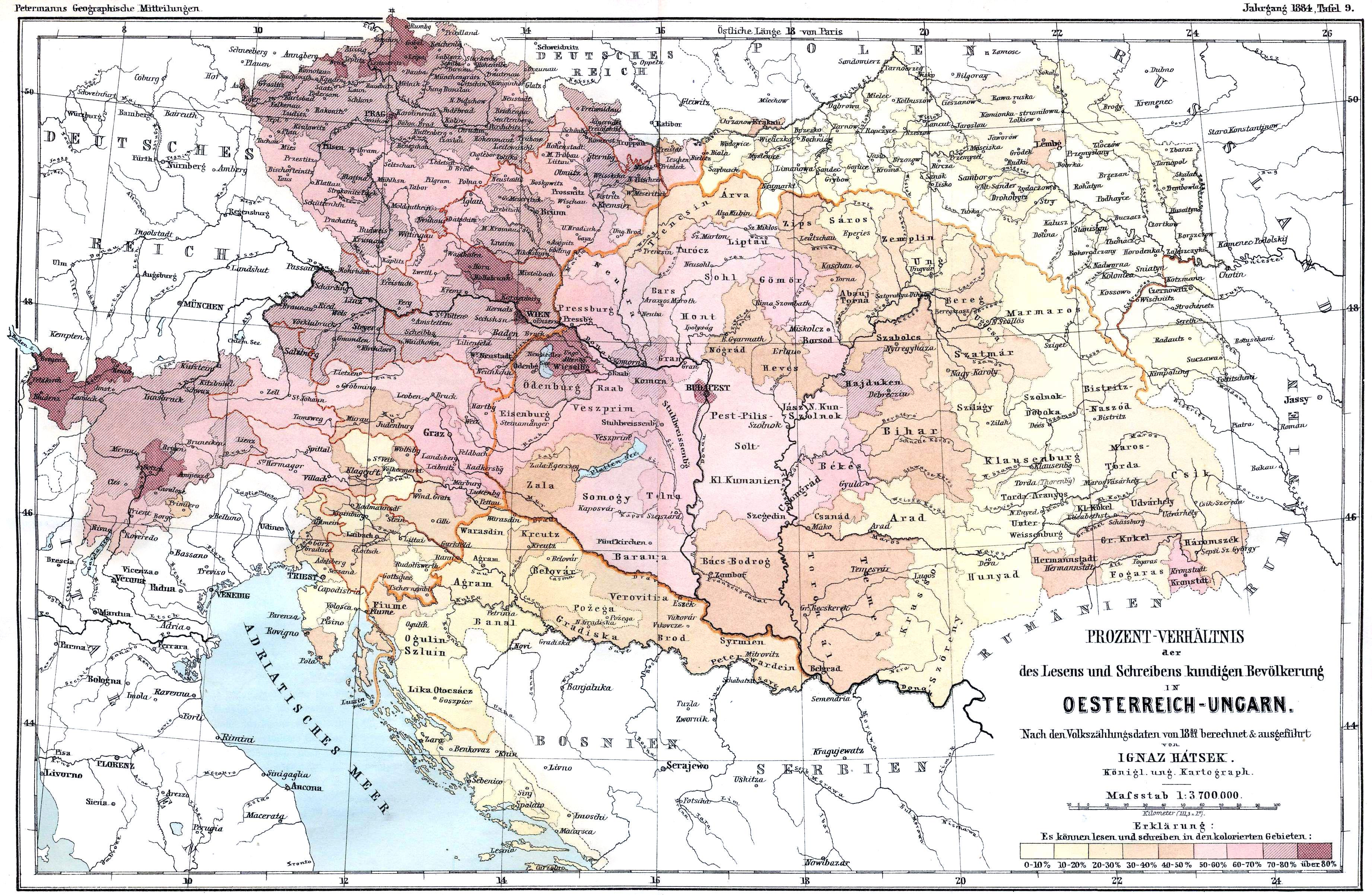Literacy Rates Map of Austro-Hungarian Empire 1880


David Chen
Data Visualization Specialist
David Chen is an expert in transforming complex geographic datasets into compelling visual narratives. He combines his background in computer science ...
Geographic Analysis
What This Map Shows
The map titled "Literacy Rates in Austro-Hungarian Empire (Census 1880)" visually represents the literacy levels across the vast territories of the Austro-Hungarian Empire during a significant period in European history. The map highlights various regions within the empire, showcasing the percentage of literate individuals, which provides valuable insight into the educational landscape of the time. As we delve deeper into the topic of literacy, we uncover not just numbers, but the stories behind them and the socio-political contexts that shaped them.
Deep Dive into Literacy in the Austro-Hungarian Empire
Literacy is a crucial indicator of social and economic development. In the context of the Austro-Hungarian Empire, which was a multi-ethnic and multi-linguistic entity, literacy rates varied significantly across different regions. The empire comprised present-day Austria, Hungary, the Czech Republic, Slovakia, Croatia, and parts of Poland, Ukraine, Romania, Italy, and Slovenia. This diversity brought unique challenges and opportunities for education.
In 1880, the overall literacy rate in the Austro-Hungarian Empire was around 80%. However, this average masked substantial disparities. For instance, urban areas like Vienna boasted literacy rates exceeding 90%, driven by industrialization, economic growth, and a burgeoning middle class. In contrast, rural areas, particularly in Hungary and parts of the Balkans, saw literacy rates plummet to as low as 40%. This gap was often exacerbated by factors such as socioeconomic status, access to education, and cultural norms regarding education for women and lower classes.
Interestingly, the literacy rates also reflected the empire's complex ethnic composition. For example, the German-speaking regions tended to have higher literacy rates compared to Slavic-speaking areas. This disparity highlights the impact of language and ethnicity on educational access. Various ethnic groups, particularly the Czechs and Poles, were pushing for educational reforms and the establishment of schools that taught in their native languages, which was a crucial part of their national identity movements.
Moreover, the role of the Catholic Church and other religious institutions cannot be overlooked. In many areas, especially in rural regions, these institutions were the primary providers of education, often offering basic literacy courses. However, the quality of education varied greatly, with some schools being well-resourced while others lacked basic materials.
Regional Analysis
Breaking down the literacy rates by region, we notice distinct patterns that reflect the historical and cultural landscapes of the Austro-Hungarian Empire. For instance, in the western regions, including Austria and parts of Bohemia, literacy was significantly higher, largely due to the influence of the Enlightenment and the establishment of public schooling systems. Here, cities like Prague and Vienna became cultural and educational hubs.
On the other hand, Hungary, particularly in the rural areas, exhibited lower literacy levels. The Hungarian government was focused on promoting the Hungarian language and culture, which sometimes led to neglect in education for non-Hungarian speaking populations. This created a scenario where ethnic minorities, such as the Slovaks and Romanians, found themselves at a disadvantage in terms of educational access.
Additionally, in the southern parts of the empire, such as Croatia and Bosnia, literacy rates were mixed. While urban centers were making strides in education, rural areas still struggled. The Ottoman influence in these regions had left a complicated legacy, affecting not only governance but also educational priorities and accessibility.
Significance and Impact
Understanding literacy rates in the Austro-Hungarian Empire is essential for comprehending the broader social dynamics of the late 19th century. Literacy was not just about reading and writing; it was a key driver of social mobility and political participation. In an age where the empire was facing increasing nationalist movements, literacy served as a tool for empowerment and identity formation.
Fast forward to today, and the legacy of these historical literacy rates continues to play a role in shaping educational policies in Central and Eastern Europe. Countries that emerged from the Austro-Hungarian Empire have varying educational challenges that can often be traced back to these historical disparities. Efforts to improve literacy and education remain pertinent, especially in regions where access to quality education is still an issue.
As we reflect on the literacy landscape of the Austro-Hungarian Empire, it prompts us to consider: How far have we come in terms of educational access? What lessons can we learn from the past to ensure that literacy remains a right accessible to all, regardless of background? The story of the Austro-Hungarian Empire's literacy rates invites us not only to look back in history but also to engage critically with the present educational challenges we face today.
Visualization Details
- Published
- September 12, 2025
- Views
- 96
Comments
Loading comments...